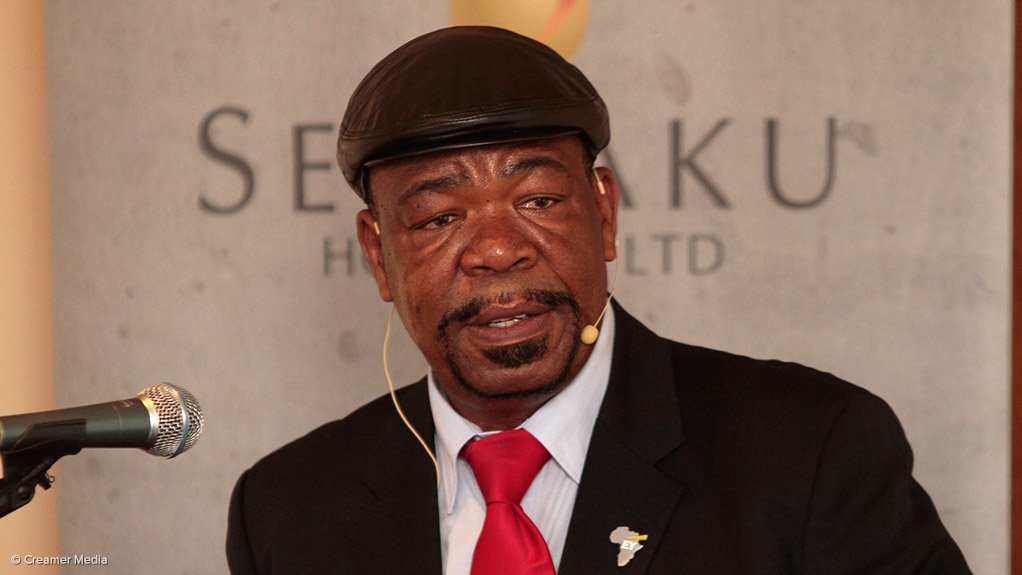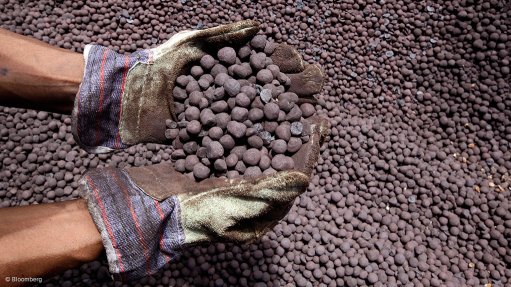Sephaku lifts FY17 profit despite challenging economic environment
JSE-listed minerals exploration, development and investment company Sephaku Holdings’ (SepHold’s) net profit increased by 12.8% year-on-year to to R68.1-million for the year ended March 31, despite its revenue having decreased to R839.9-million on the back of lower prices and reduced demand in the mixed concrete market.
CEO Dr Lelau Mohuba on Friday noted that operating profits increased to R84.7- million from R84.2-million the year before. Basic earnings a share increased to 33.63c from 30c and earnings a share to 33.37c from 29.84c, despite the challenging market conditions that had prevailed during the year under review.
He further highlighted that SepHold’s mixed concrete subsidiary Métier had recorded a 7.3% increase in net profit to R67.4- million, despite revenue having declined by 3.9%.
“The mixed concrete sector experienced intense price competition for supply contracts, resulting in downward pressure on prices. The competition was driven by the continued contraction in large-scale construction projects and new entrants into key markets,” he stated.
Mohuba elaborated that the primary cause of the increase in the number of independent mixed concrete manufacturers was owing to the lower pricing for bulk cement. He pointed out that the “most aggressive competitors” were the vertically integrated companies that provided a “captive market” for the related cement and aggregates manufacturers.
Moreover, he remarked that Métier’s understanding of the market and ability to secure profitable concrete supply deals were instrumental in the subsidiary maintaining its share of the market.
Further, Mohuba mentioned that the geographical diversification of Métier’s plants and the manufacture of specialised concrete enabled the subsidiary to maintain an operating margin of 12.9%, which was a slight improvement from 12.7% in the previous year.
He said the subsidiary’s performance further demonstrated management’s mantle through the reduction in the cost of sales by 5.2% to R483.7-million and operational expenses by 3.7% to R250.4-million to support margins.
Following positive results for the past two years, Métier was able to pay a R50- million dividend to SepHold and reduced its overall bank debt obligations by R87-million to R215.9-million.
Mohuba pointed out that the group had added a twelfth plant, in the south of Gauteng, which started production in March. He added that the new plant was well aligned to the subsidiary’s overall strategy and would enable Métier to increase its footprint to reduce overreliance on the current growth nodes by diversifying the customer base.
Meanwhile, SepHold’s other subsidiary, cement producer Sephaku Cement (SepCem), recorded an 4% year-on-year rise in sales volumes.
However, the average price per ton decreased by 4.6% year-on-year for the period ended December 31, 2016. SepCem’s results are for the year ended December 31, owing to Dangote Cement’s shareholding in the company.
SepCem’s earnings before interest, taxes, depreciation and amortisation (Ebitda) margin increased to 23.1% from 21.9% and its net profit increased to R68.9-million from R50.4-million of which R24.8-million was equity accounted for by SepHold through its 36% stake in the entity.
The net profit included one-off income from the closure agreement with Chinese engineering firm Sinoma International Engineering on the final handover of the plants and reflects the increases in cost of sales, operating expenses and finance costs.
Mohuba commented that the cement market remained “highly fragmented” with all manufacturers using price competition to defend their sales volumes.
Import volumes decreased by 53% to 389 000 t from 820 000 t for the year ended December 2016. However, Mohuba pointed out that bagged cement pricing started to stabilise at the end of the 2016 calendar year.
Nonetheless, the contestation continued in the bulk cement market owing to the limited number of new significant construction projects.
Bagged cement represented between 70% and 80% of sales volumes because of the limited activity in the bulk use market. “SepCem focussed on achieving the optimal product mix in all its markets to maintain its sales volumes,” remarked Mohuba.
He said the “highly competitive” market and downward pressure on pricing resulted in SepCem’s loan covenants, namely the debt service cover ratio, being increasingly under pressure.
“SepCem is in negotiations with its lenders to review the capital repayment profile without changing the original payment period so as to reduce pressure on the ratio going forward,” stated Mohuba.
SepHold FD Neil Crafford-Lazarus, meanwhile, noted that sales volumes for the first quarter of this year, ended March 31, were 3.6% lower year-on-year mainly owing to the high rainfall and competitive forces.
He pointed out that SepCem had implemented price increases in February that have been sustained in most markets.
“By the end of March, the prices indexed from January were 4% and 5% higher for the bagged and bulk cement, respectively,” he said.
Crafford-Lazarus explained that the application of a price differentiation model for the various provincial markets enabled SepCem to reduce the downward pressure on margins.
“In the same vein, efforts to lower operational costs by improving efficiencies continued through the optimisation programme. Although the continued decrease in prices limited the positive impact on the Ebitda margin, SepCem had achieved 50% of the targeted R115-million cost saving by end of December 2016. Management is targeting to complete the programme by the end of December 2017,” he highlighted.
AFRICA NOT A GROWTH OPPORTUNITY
In response to a question from Engineering News Online regarding whether SepCem had plans to increase export capabilities into the rest of Africa, SepCem CEO Pieter Fourie said the company did not believe this was viable option as distribution costs accounted for the largest portion of SepCem’s cost base at 22% and that any attempted expansions would only add to this figure.
“We have limited exports to neighbouring countries, such as Botswana, Lesotho and Swaziland, but we do not regard this as exports, but rather as extensions to our South African base,” he stated.
Fourie remarked that the the small volumes it had been sending to these countries had, in fact, decreased over the past year.
Comments
Press Office
Announcements
What's On
Subscribe to improve your user experience...
Option 1 (equivalent of R125 a month):
Receive a weekly copy of Creamer Media's Engineering News & Mining Weekly magazine
(print copy for those in South Africa and e-magazine for those outside of South Africa)
Receive daily email newsletters
Access to full search results
Access archive of magazine back copies
Access to Projects in Progress
Access to ONE Research Report of your choice in PDF format
Option 2 (equivalent of R375 a month):
All benefits from Option 1
PLUS
Access to Creamer Media's Research Channel Africa for ALL Research Reports, in PDF format, on various industrial and mining sectors
including Electricity; Water; Energy Transition; Hydrogen; Roads, Rail and Ports; Coal; Gold; Platinum; Battery Metals; etc.
Already a subscriber?
Forgotten your password?
Receive weekly copy of Creamer Media's Engineering News & Mining Weekly magazine (print copy for those in South Africa and e-magazine for those outside of South Africa)
➕
Recieve daily email newsletters
➕
Access to full search results
➕
Access archive of magazine back copies
➕
Access to Projects in Progress
➕
Access to ONE Research Report of your choice in PDF format
RESEARCH CHANNEL AFRICA
R4500 (equivalent of R375 a month)
SUBSCRIBEAll benefits from Option 1
➕
Access to Creamer Media's Research Channel Africa for ALL Research Reports on various industrial and mining sectors, in PDF format, including on:
Electricity
➕
Water
➕
Energy Transition
➕
Hydrogen
➕
Roads, Rail and Ports
➕
Coal
➕
Gold
➕
Platinum
➕
Battery Metals
➕
etc.
Receive all benefits from Option 1 or Option 2 delivered to numerous people at your company
➕
Multiple User names and Passwords for simultaneous log-ins
➕
Intranet integration access to all in your organisation





















